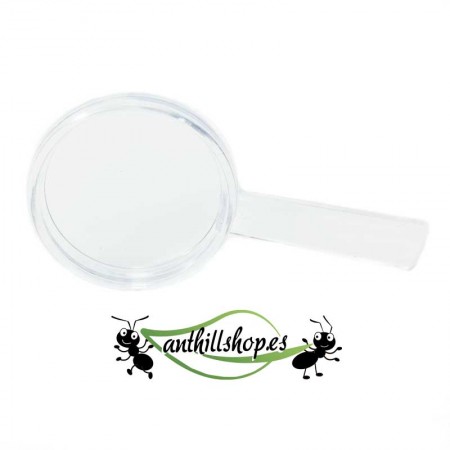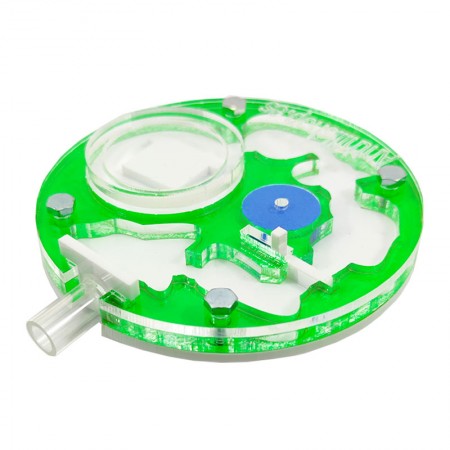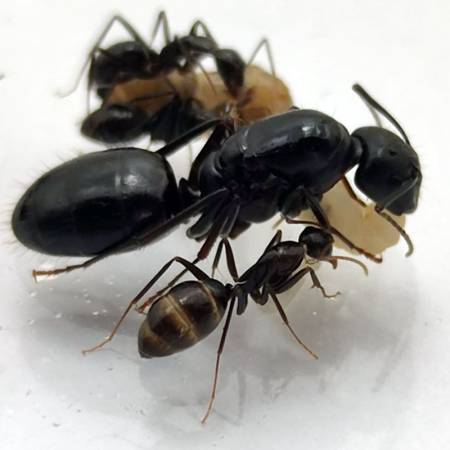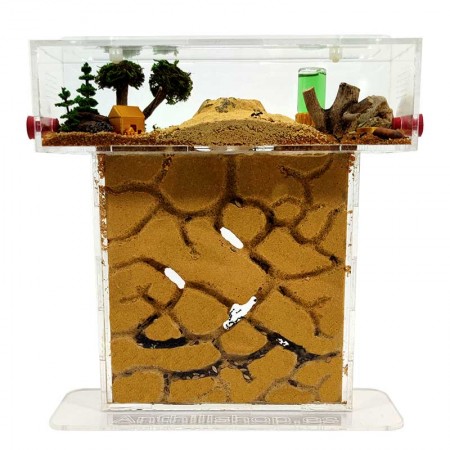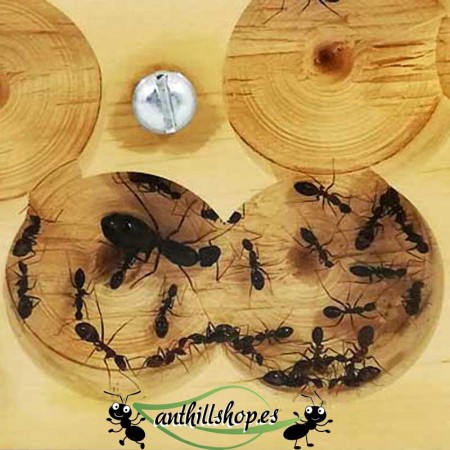copy of
(Only one species for each order)
This form is omnívora, for its small size we will have to choose a good form.In principle it is convenient to grow them in the test tube until we have a great number of worms.Their nutrition is based on sweet fluids, seeds, fruits and above all insects.Their nutrition is quite simple, but it is highly recommended to provide them with a continuous supply of protein as they can be small insects.It is formed by a Queen more eggs, larvas and pupes.
- anthills
- handmade anthills
- anthills for kids
- educational anthills
- stone anthills
- ant food
- Messor barbarus
- Camponotus barbaricus
- protein syrup for ants
- artificial anthill
- anthill kits
- anthill kit
- crystal1
- foraging boxes
- initiation anthills
- mushroom anthills
- decorative sand
- decorative red sand
- decorative green sand
- pipette
- syringe
- tweezers
- glass foraging boxes
- plastic tweezers
- fine point precision pliers
- metal clamp
- type 1 seeds
- acrylic anthill 15 x 15 gale
- curved precision tweezers
- sandwich anthill 20 x 10 more
- decorative stone
- anthill buy
- ant terrarium
- formicarium
- ant nest
- sand anthills
- Acryl Ameisenhaufen
- ant colonies
- ants syrup
- Ameisenhaufen
- ant Farm
- Decorative pine bark
- where to buy ant farm
- acrylic anthills
- Printed acrylic anthills
- artificial anthills
- glass anthills
- small T anthill
- anthills big T
- acrylic anthills 1
- magnifying glass
- anthills amazon
- ytong anthills
- mead
- anthill shop
- free ants
- https://anthillshop.es/en/
- homemade anthills
- gel anthills
- cork anthills
- crystal anthills
- anthills buy
(Only one species for each order)
This form is omnívora, for its small size we will have to choose a good form.In principle it is convenient to grow them in the test tube until we have a great number of worms.Their food is based on sweet fluids, seeds, fruits and above all insects, (record always it is preferable to freeze any insect for about 24 hours to avoid introducing acars in our worm).Their diet is quite simple, but it is highly recommended to provide them with a continuous supply of protein in the form of insects. It is formed by a Queen more eggs, larvas and pupes.
The size:
Queen: 6 – 8,5 mm.
Macho: 3.7 – 5 mm.
Workers: 1.6 – 2.6 mm.
Soldier: 3.3 – 4.9 mm.
THE FOOD:
Living insects, dead insects, pipes, etc.They also like the extra fine feeds and pasta without cooking, water with honey, water with sugar or protein jarab.(we always remember it is preferable to freeze any insect for about 24 hours to avoid introducing acars into our worm)
Both in captivity and in wild state the Pheidole are omnívoric worms.Workers collect and bring food to the nest.To feed the worms shift the food and throw into them their stomach juices.The resulting soup is absorbed by the form.As in other species, larvas are not alone and must be fed by the workers.
The worms also taste the sweetened fluids that we will place in captivity to avoid the dehydration of the colony.
According to the size of the colony, your protein needs will increase exponentially and we will have to have insects to hunt with avidity to fulfill this need.
The Territory:
Since the humidity needs of this species are medium, it would be recommended the use of strawberries built with metacrylate, crystal cortex, stone etc.a good humidity system.
As all worms prefer darkness and queens are photophobic.However, it is possible to get used to the environmental light, without direct sun, without this excessively modifying the natural behavior of the colony.I personally recommend putting a dark area inside the worm for the queen and eggs.
The temperature:
25oC to 30oC
Under 15°C the colony enters into inactivity.
And humidity:
65% to 90% is recommended.
They should always have a source of water to drink.
By Hibernation: They usually hibernate in the middle of November at the end of February, from 12oC to 15oC but it is not usually necessary.
Instructions included.








